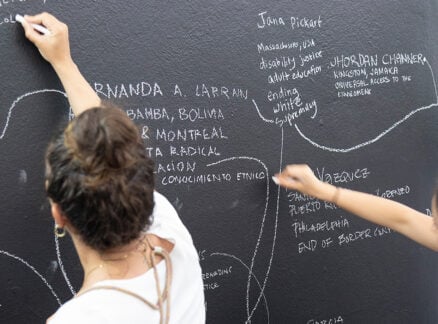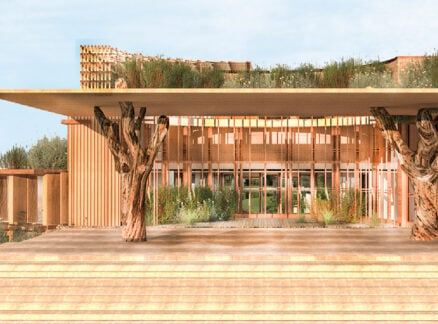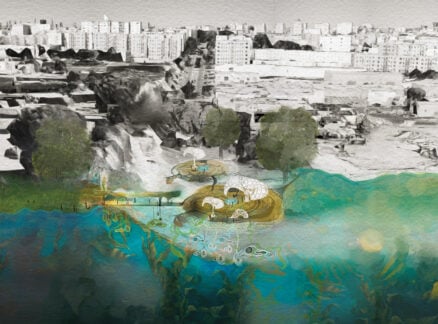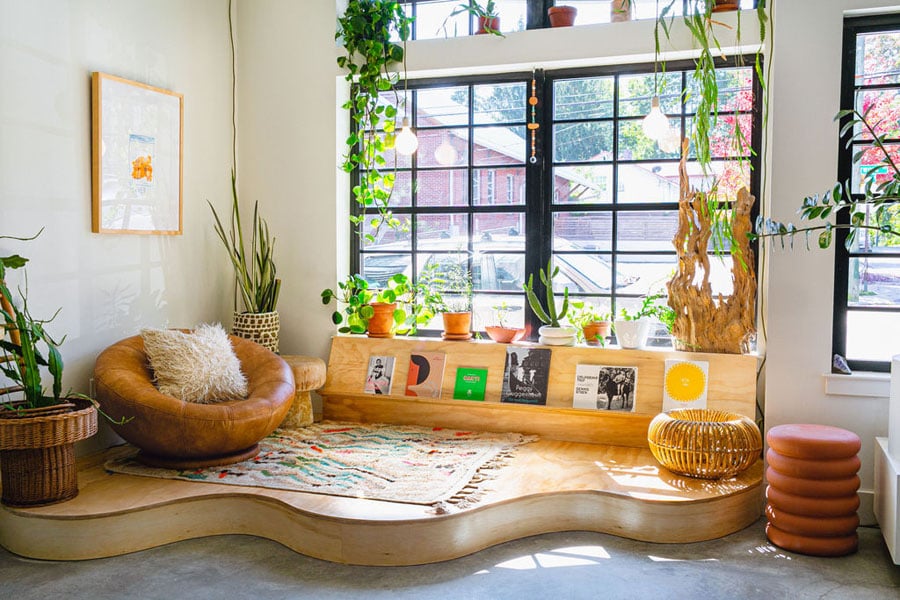
March 17, 2021
In Its Retail Spaces, Shelter Collective Elevates the Object
During the pandemic, the Asheville, North Carolina–based studio designed a number of adaptable shops from a cannabis boutique to a children’s clothing store.

Across all its projects, Shelter Collective starts with the same intentions: elevate the objects, support local craft, and design custom fittings that are made to last. Given retail’s short lifespan, the latter may seem counterintuitive, but with numerous projects that opened shop during the pandemic, the Asheville, North Carolina–based interior design studio has it down pat.
“Everything in life, related or unrelated to design, needs to be about adaptability,” Shelter cofounder Karie Reinertson says, reflecting on how the studio has navigated the pandemic. For Shelter, that comes down to two things: Modularity and materials. Garden Party, a cannabis lifestyle boutique, and Playdate, a children’s clothing store, were both designed with this precept in mind. While the shops’ programs couldn’t be more different, both share a wall in the same Asheville building and both opened in 2020.
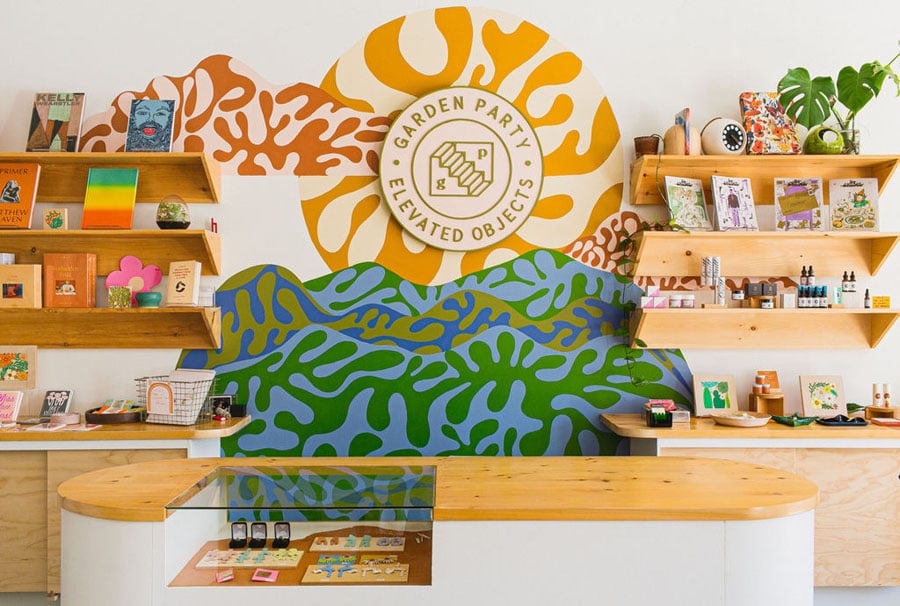
“The budgets were pretty small so we had to be scrappy, which was really fun,” Reinertson says on the two projects. Because of that, she and her design partner and husband, Rob Maddox, looked to recycle materials from past projects and utilize what the owners already had on hand. Having designed Garden Party’s first location in 2018, Shelter was able to adapt some features—like a pill-shaped cash counter, plaster pedestals, and a wood slat wall—to the new location.
Despite its small 700-square-foot footprint, Garden Party provides space for displaying and browsing the store’s handmade objects (from pipes to jewelry), books, and CBD products as well as space for guests to kick back. Coming from an interior styling and antique dealing background, co-owner Tarleton Walmsley had a clear vision for the store, which she says Shelter seamlessly executed. In the front of the store, Shelter translated Walmsley’s sketches for a lounge into a curvilinear plywood platform that will eventually accommodate events. The playfully simple element welcomes the area’s creative community and distinguishes the store from the ubiquitous Asheville headshop, which was a key part of the brief.
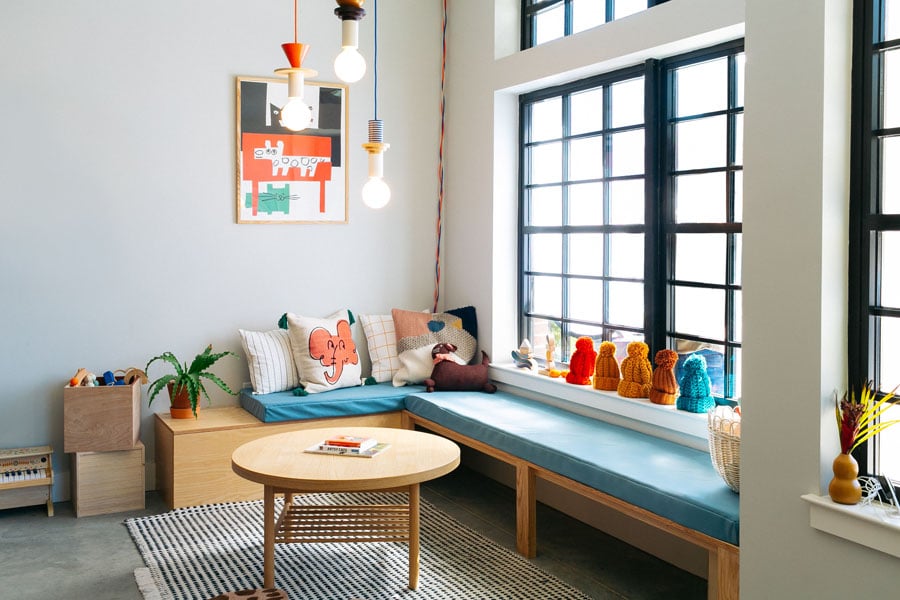
Given the transience of brick-and-mortar retail, Reinertson emphasizes the importance of modularity: “That means the custom fixtures we design might have a life if the store is to change in some way.” Built-in elements eliminate the need to source mass-produced furniture and have also helped the studio sidestep lengthy COVID-19 lead times.
In Playdate, modular seating nooks adorn the shop while providing kids a place to play while parents shop. They are also a visual reference to the way children’s toys are designed and arranged.
Collaborating with local artisans, craftspeople, and fellow designers is key to “imbue all the objects in a space with the maker,” Reinertson says. A defining feature of Garden Party is a psychedelic mural painted by local artist Clare Beumer Hill. Depicting the nearby Blue Ridge Mountains rendered in Matisse-esque foliage, the oranges, blues, and greens work with Shelter’s palette of warm woods and plaster to unify the interior with the client’s branding.
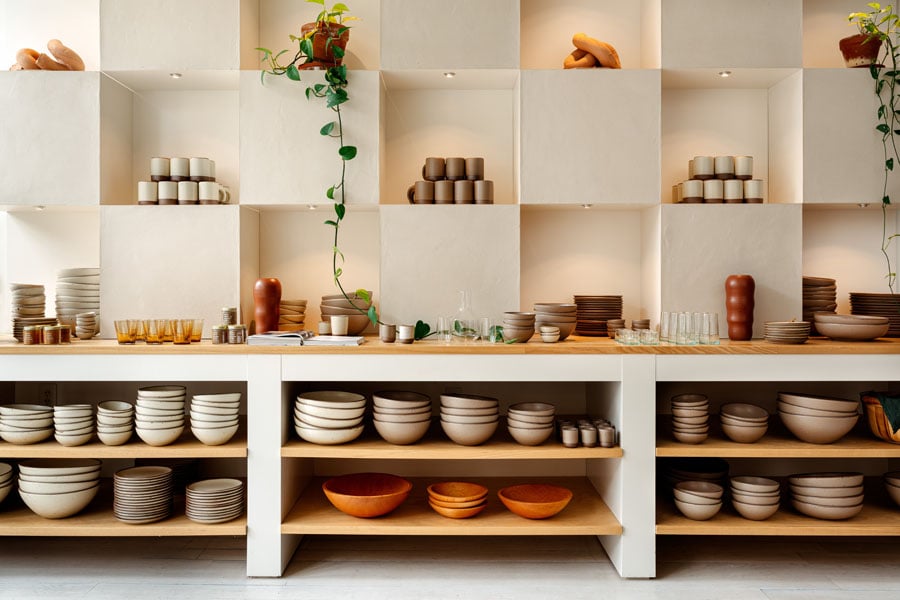
Apparent in their longstanding relationship with East Fork Pottery (for which they have designed three locations since moving to the area ten years ago), Reinertson and Maddox say each project begins by taking cues from their client’s brand identity. But “we’re not exactly shape-shifters,” says Maddox, noting that most of the client’s Shelter works with align with the studio’s ethos of craft, sustainability, and community—all characteristics that feed into city’s overall vibe of uplifting local makers and supporting small businesses. Maddox says, “Our clients value quality objects, buying less, and keeping things around.”
“East Fork’s ceramics are simple but also refined and approachable,” Maddox says. Shelter translated that aesthetic into its new Atlanta location by choosing ash wood as a primary material. Using the language of circles and squares, Shelter’s design reflects the tabletop and roundness of their iconic plates and vessels. A grid shelving system is placed in front of a terra-cotta-colored curtain.

Since the beginning of the pandemic, East Fork’s downtown Asheville location has opened on an appointment-only basis. In addition to the lack of foot traffic, it’s mirroring the changing role of retail display: Reinertson notes that the new set of conditions “lends itself to a more minimal display.” If a shop is only open by appointment, a rush of people isn’t going to come in and grab everything off the shelf. “You can set things out and have more breathing room around objects,” she says. Maddox adds, “Elevating the object takes it out of being a commodity.”
But while the pandemic has opened up new possibilities for retail, in-person shopping will not become a thing of the past. “Part of going to Garden Party is that you get to see Tarleton’s set-up and she can help you choose something. Or you just get to chat and hang out,” Reinertson says. They describe working during the pandemic as an opportunity to problem-solve aspects of their practice. Ultimately, it comes back to adaptability: “People are adaptable and have adjusted how they shop. That seems like a pretty good thing.”
You may also enjoy “D.S. & Durga Opens a Concrete-Clad Perfume House in Brooklyn”
Would you like to comment on this article? Send your thoughts to: [email protected]
Register here for Metropolis’s Think Tank Thursdays and hear what leading firms across North America are thinking and working on today.

















